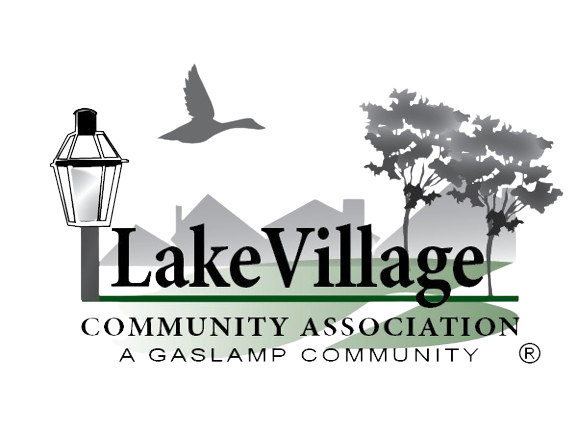Ever Mindful of Our History
Our History, Mission, Vision and Core Values
History is of great importance because it helps us understand the circumstances that have shaped the landscape we live in today, not to mention that history is very interesting.
The History of Lake Village
Lake Village Community Association was established in 1969. We are the second oldest neighborhood in Temecula. The community of Lake Village originally featured gas lamps along the streets as street lights were not yet in use. Each home featured a gas lamp in their front yard.
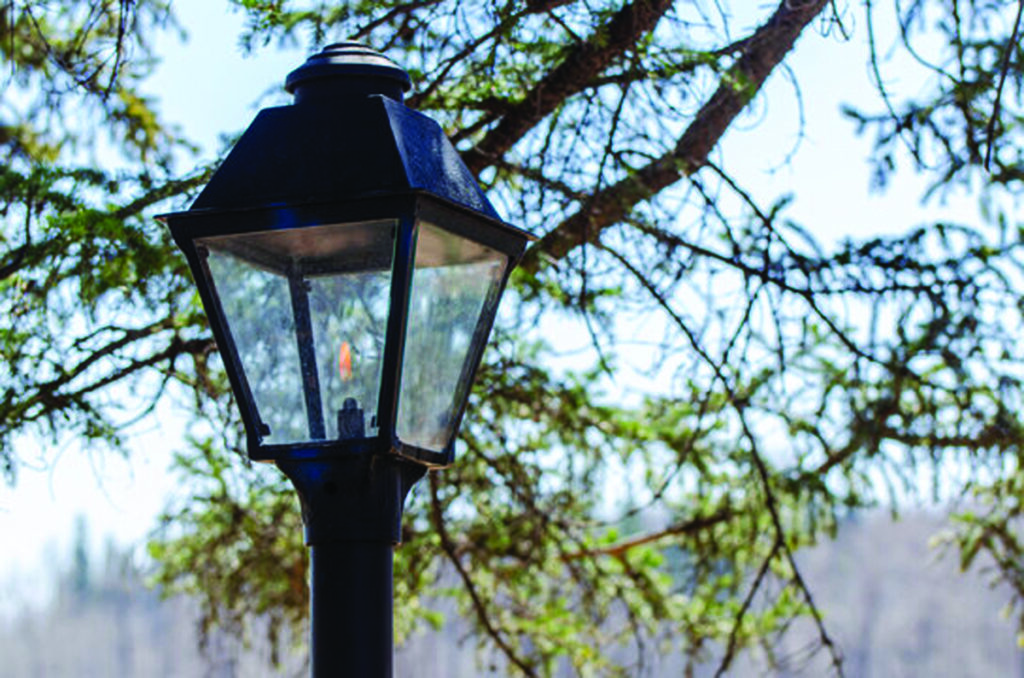
The Rancho California Rose
Prior to Temecula becoming an incorporated city, the area encompassing Lake Village was referred to and marketed by Kaiser-Eatna as Rancho California. Lake Village new homes were originally purchased at the visitor center located at the intersection of Rancho California Road and Ynez Road. Each new homeowner was gifted a rose bush as a housewarming gift. Many of these rose bushes remain and are seen as you enter our community.
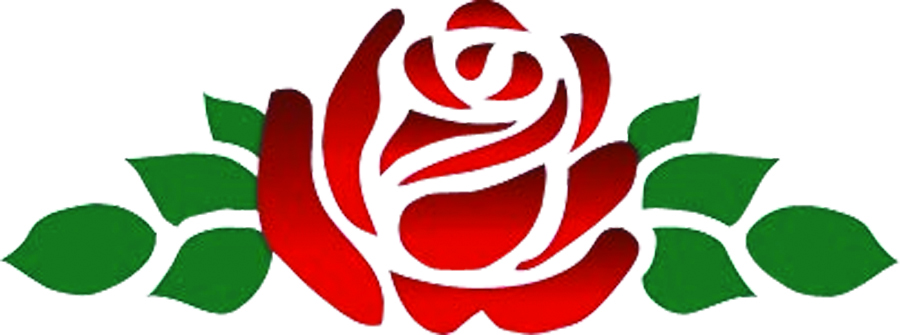

Mission Statement
Our mission is to support an association of diverse neighbors, who voluntarily work together to enhance and protect property values and quality of life; to be guided by a set of principles that are fair, equal, inclusive, ethical and objective; to embrace critical and creative thinking for research and prudent budgeting; to remain focused on our environment, health and goodwill; to seek valuable, sustainable solutions to maintaining our common area, lake, facilities and equipment; to uphold and follow our governing documents; and to promote our Association brand to build positive name recognition and long term value.
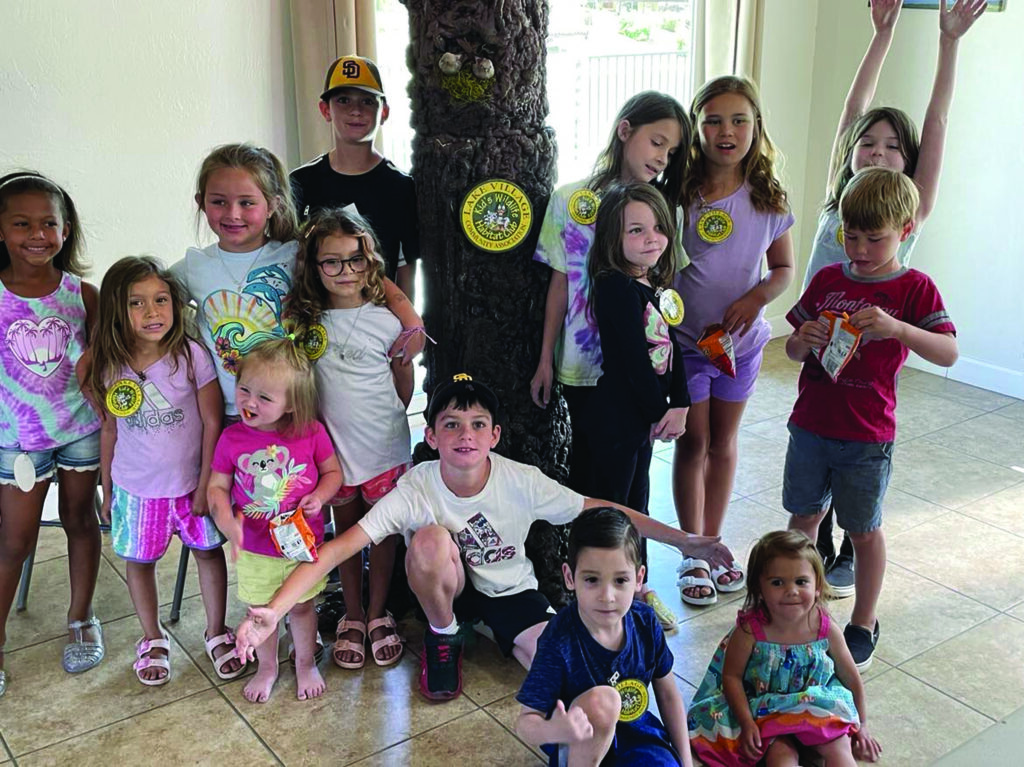
Vision Statement
We strive to be a more highly functional board; guided by a set of principles that promote and protect our Members’ quality of life, needs and home values. We will embrace diversity, equality and inclusion. Our picturesque lake, common areas, parks and meadows will serve as the perfect setting for Members to reflect and refresh under a canopy of deciduous and evergreen trees; Members will enjoy the amenities for family and neighborhood events; experience a new relationship with conservation and restoration; and realize the full benefit of living within a natural habitat for aquatic, bird and plant life. Most importantly, we will build a sense of community that is maintained by welcoming each new homeowner and know and appreciation the history of Lake Village.
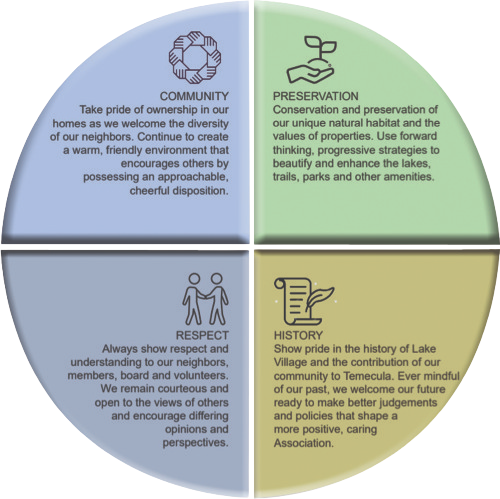
Lake Village Community Association Core Values
In essence, our Association’s values are the beliefs, philosophies, and principles that drive our decisions. Our Association’s values are our DNA and they help us differentiate our community from others. That’s why we can’t make any important decisions without having them in mind.
Community
Take pride of ownership in our homes as we welcome the diversity of our neighbors. Continue to create a warm, friendly environment that encourages others by possessing and approachable, cheerful disposition.
Respect
Always show respect and understanding to our neighbors, members, board and volunteers. We remain courteous and open to the views of others and encourage differing opinions and perspectives.
History
Show pride in the history of Lake Village and the contribution of our community to Temecula. Ever mindful of our past, we welcome our future ready to make better judgments and policies that shape a more positive, caring Association.
Preservation
Conservation and preservation of our unique natural habitat and the values of properties. Use forward thinking, progressive strategies to beautify and enhance the lakes, trails, parks and other amenities.
The history of Temecula Valley.
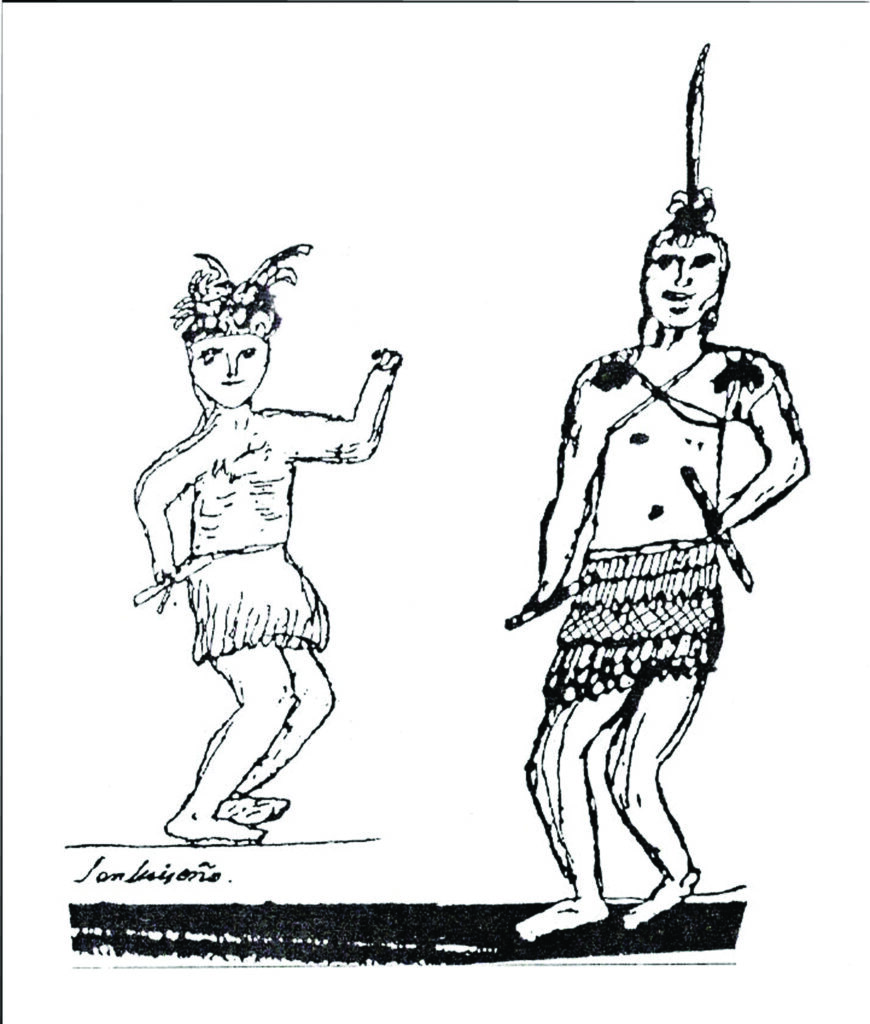
Luiseño Indians or Payómkawichum
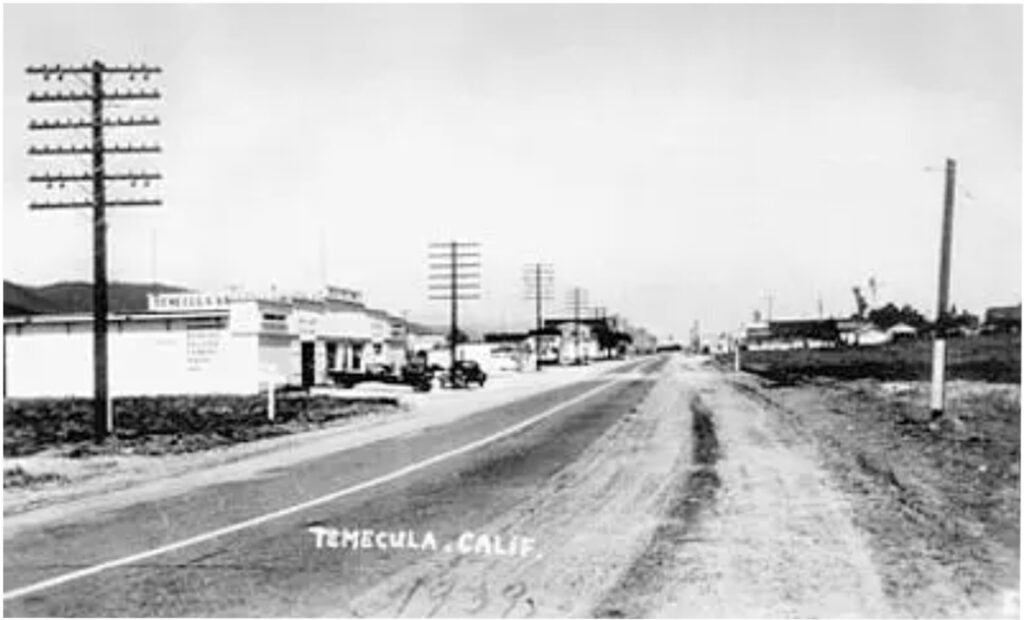
Highway 395
Temecula in 1939
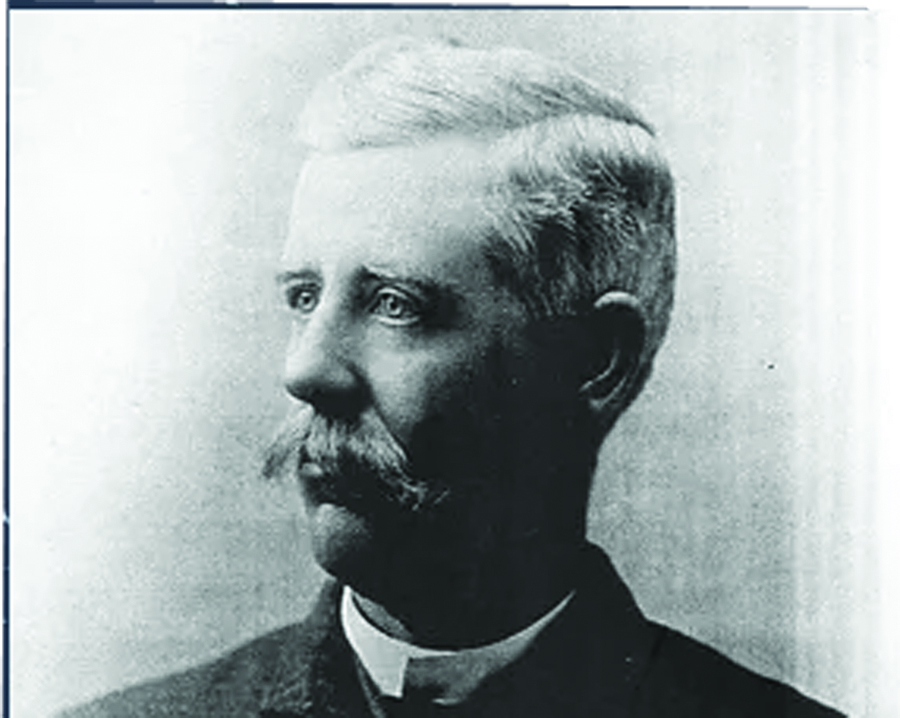
Walter Vail
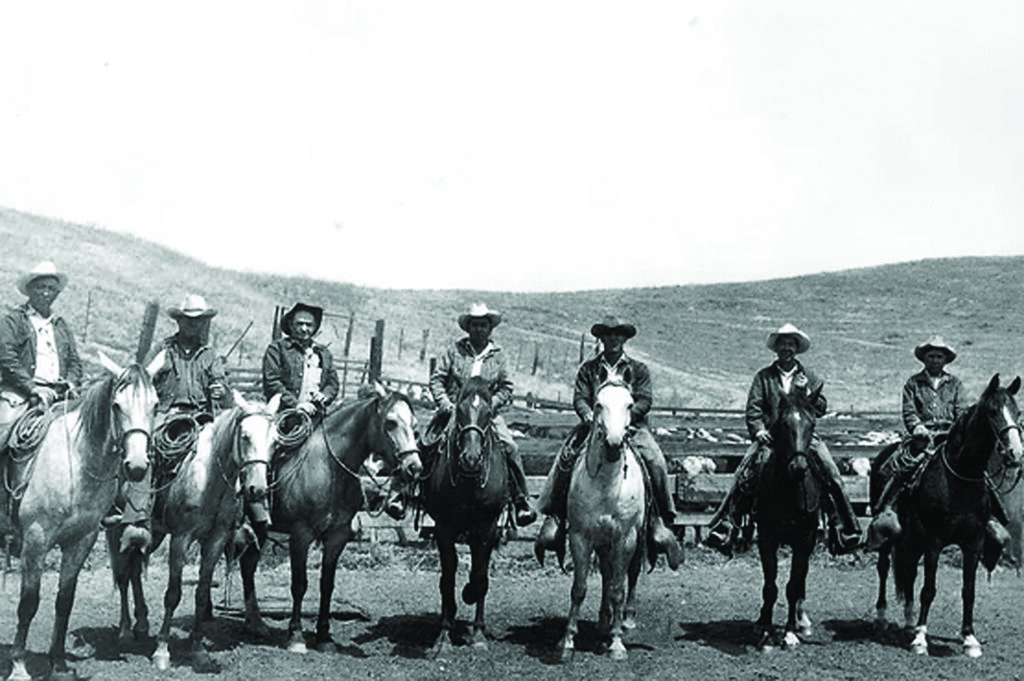
Vail Ranch Cowboys, 1947
The history of the Temecula Valley goes back to the Luiseño Indians or Payómkawichum. They are the indigenous people of California who, at the time of the first contact with the Spanish in the 16th century, inhabited the coastal area of southern California, ranging 50 miles from the present-day southern part of Los Angeles County to the northern part of San Diego County, and inland 30 miles. In the Luiseño language, the people call themselves Payómkawichum, meaning “People of the West.” After the establishment of Mission San Luis Rey de Francia (The Mission of Saint Louis King of France), the Payómkawichum began to be called San Luiseños, and later, just Luiseños by Spanish missionaries due to their proximity to this San Luis Rey mission.
The Payómkawichum were successful in utilizing a number of natural resources to provide food and clothing. They had a close relationship with their natural environment. They used many of the native plants, harvesting many kinds of seeds, berries, nuts, fruits, and vegetables for a varied and nutritious diet. The land also was inhabited by many different species of animals which the men hunted for game and skins. Hunters took antelopes, bobcats, deer, elk, foxes, mice, mountain lions, rabbits, wood rats, river otters, ground squirrels, and a wide variety of insects.
In 1904, Walter Vail, who had come to the United States with his parents from Nova Scotia, migrated to California. Along with various partners, he began buying land in Southern California. Vail bought ranchland in the Temecula Valley, buying 38,000 acres of Rancho Temecula and Rancho Pauba, along with the northern half of Rancho Little Temecula. Vail was killed by a streetcar in Los Angeles in 1906; his son, Mahlon Vail, took over the family ranch. In 1914, financed by Mahlon Vail and local ranchers, the First National Bank of Temecula opened on Front Street.
In 1915, the first paved, two-lane county road was built through Temecula. Front Street in Old Town Temecula was one section of U.S. Highway 395, the Route 66 of the West. The U.S. Highway 395, a 1,400-mile-long ribbon of road linked Mexico, the U.S., and Canada. Before Interstate 15 was built between Southern California, Las Vegas, Salt Lake City, and ultimately the Canadian border in Montan, Highway 395 was the region’s primary north-south highway.
By 1964 the Vail Ranch had grown to 87,500 acres and was known as a major cattle and agriculture business. Kaiser-Aetne partnership purchased the property, and the area took on the name, Rancho California. A later purchase brought the total to 97,500. Kaiser-Aetne under the name KACOR Development began introducing the first of several home developments. In 1969, Lake Village, with its 251 home sights, was established between Rancho Vista Road, Ynez Road, and Pauba Road. The new community featured two small lakes surrounded by rolling hills. Young trees were planted and over the years became an amazing wildlife habitat. Young families began arriving from all corners of Southern California making Lake Village their forever home.
